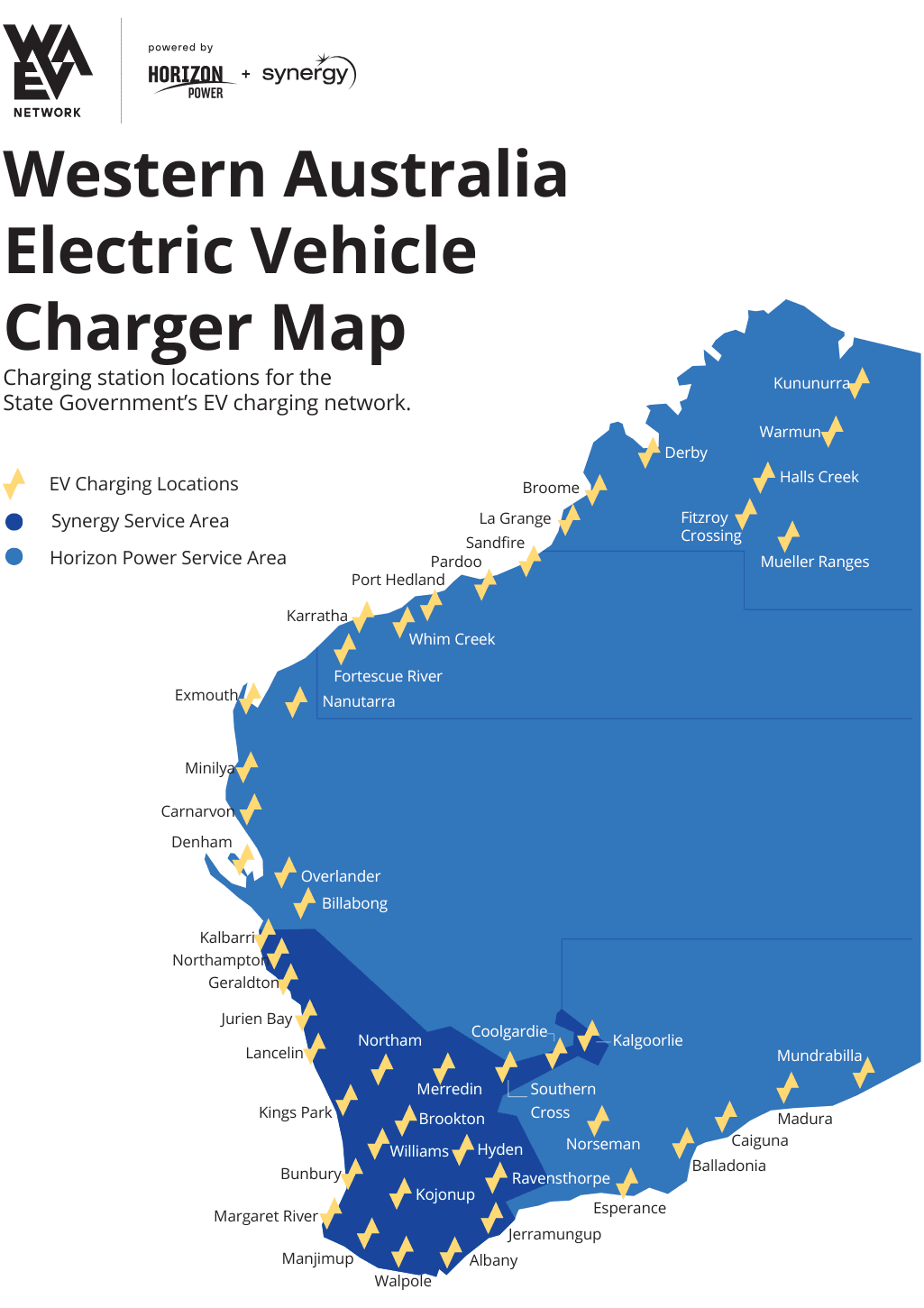The Western Australia state government has said its state-spanning EV-charging highway is now fully operational.
The network, part of a major push to promote EV uptake in the state as promised in the 2021 election campaign, has drawn international acclaim in the tourism industry, with both the BBC and the New York Timesplacing the state on their must-visit lists for 2025 and making direct reference to the highway for bolstering the state’s sustainability drawcard.
WA’s Energy, Environment and Climate Action Minister Reece Whitby said recent publicity showed the move was great news for the tourism sector.
“We have opened our State to EV drivers, who can travel from Albany to Kalbarri or Perth to Esperance without the fear of range anxiety,” he said. “That’s good news for tourism in WA and a big reason why the network has drawn international attention.”
The network of charging stations, which is Australia’s longest, comprises 110 charging points across 49 locations between Mundrabilla in the south and Kununurra in the north.
While the distance between these points alone is a whopping 3,600 kilometre, 39-hour drive, the total network covers approximately 7,000 kilometres.

Though the network mostly draws on grid power, chargers in some of the more isolated locations are supported by standalone systems with solar power and small-scale battery storage.
Jointly delivered by Synergy, WA’s largest electricity supplier within the South West Interconnected System (SWIS), and Horizon Power, the state’s regional electricity provider, the network is part of the WA state government’s $43.5 million investment in EV infrastructure.
As reported by the ABC in mid-January, the network has faced some teething problems, with EV enthusiasts telling that masthead that some chargers in the state – on both the Synergy and Horizon Power network, as well as chargers installed by privately-owned companies – were being downed by technical issues.
The state government blamed the problem on vandalism, while Horizon Power said it had installed back-up chargers at all of its remote sites, and Synergy pointed out that its 22 chargers on the network were available more than 98 per cent of the time in December.
Horizon Power CEO Stephanie Unwin said the delivery of an EV-charger superhighway in WA’s beautiful but often extreme surrounds required innovative thinking.
“Installing EV chargers in remote locations is not without its challenges,” Unwin said. “It requires novel thinking to get the EV chargers to work reliably on small microgrids and to facilitate the transportation of materials in remote parts of our state, so that we can deliver this important infrastructure.
“Acknowledging the need for reliable EV chargers in our remote locations, which are often subject to extreme climates and resource constraints, we have installed back-up chargers at all sites.”
Synergy Executive General Manager Brent Italiano said there had already been 36,000 charging sessions on the network before Christmas.

According to the Department of Transport, the number of registered EVs on WA’s roads more than double in the past financial year to about 22,000, with the biggest increase in ownership in the outer suburbs of Perth, including Wanneroo, Joondalup, and Cockburn.
While the WA state government says its network is Australia’s longest EV charging highway, it seems the Queensland state government would beg to differ.
For their part, they say their Queensland Electric Super Highway (QESH) is the world’s longest EV super highway within a single state.
The discrepancy is likely a matter of branding, with the Queensland state government positioning its highway as a single, continuous route, while the Western Australian EV highway is marketed as a state-spanning network.


